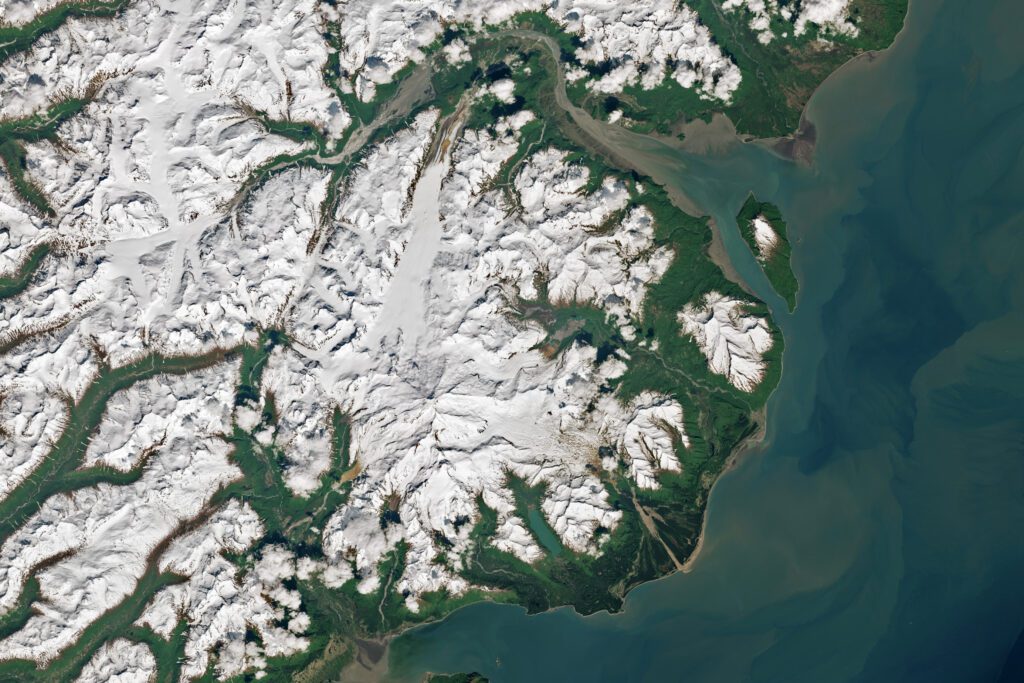An image of Alaska’s Iliamna Volcano “ready to rumble” has been captured from space.
The image was taken on June 10 by the OLI (Operational Land Imager) on the Landsat 8 satellite, which is operated by NASA and the United States Geological Survey.
The volcano saw an increase in seismicity, marked by frequent small earthquakes, around 4:30 a.m. local time on June 15.
“This activity is likely not caused by volcanic unrest,” the Alaska Volcano Observatory (AVO) said, but is instead caused by avalanches thundering down the volcano’s slopes.
While it last erupted in 1867, Iliamna still rumbles once every two years and “its murmurs tend not to be signs of volcanic unrest but rather the signature of avalanches large enough to register on nearby seismic and infrasound instruments,” NASA explains.
The AVO added: “Initially, the earthquake rate was nearly continuous, with several earthquakes per minute, but this has since slowed to a rate of about one earthquake per minute.”

NASA Earth Observatory
The snow-covered stratovolcano is found on the western side of the lower Cook Inlet of Lake Clark National Park, about 130 miles southwest of Anchorage and 30 miles southwest of the more eruptive Redoubt Volcano.
“Although steam plumes occur on its eastern flanks, there has been no historical volcanic activity at Iliamna,” notes the AVO.
While the AVO did not have enough information, as of June 16, to ascertain the size and location of any slide that may have occurred that day, the recent seismic activity was similar to that caused by the initial slipping between rock and ice that has preceded large avalanches on the volcano in the past.
However, the “outcome of the current activity remains uncertain,” the AVO says, noting that large ice and rock avalanches on Iliamna in the past have taken place around this time of year.
Mostly covered by perennial snow, ice and numerous glaciers radiating from the summit area, large avalanche deposits are observed on Iliamna’s flanks, especially down the Umbrella Glacier on its southwest side.
Massive slides on the slopes of the volcano can occur from a combination of glacial ice; hydrothermally altered and weakened rock; and volcanic heat.
Researchers says the frequency of the large ice and rock avalanches observed at this volcano is unusual but offers a setting for understanding the mechanics and precursors of this type of event.
“Iliamna is remote, but similar conditions in more populated ranges around the planet could pose hazards to communities,” NASA warned.
Do you have a tip on a science story that Newsweek should be covering? Do you have a question about volcanoes? Let us know via science@newsweek.com.

